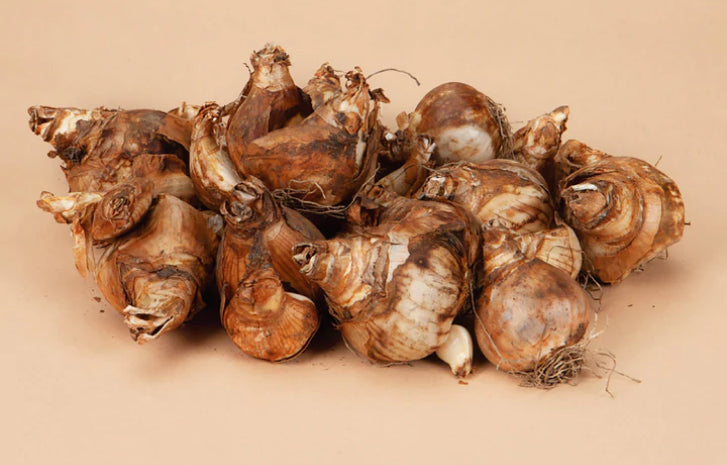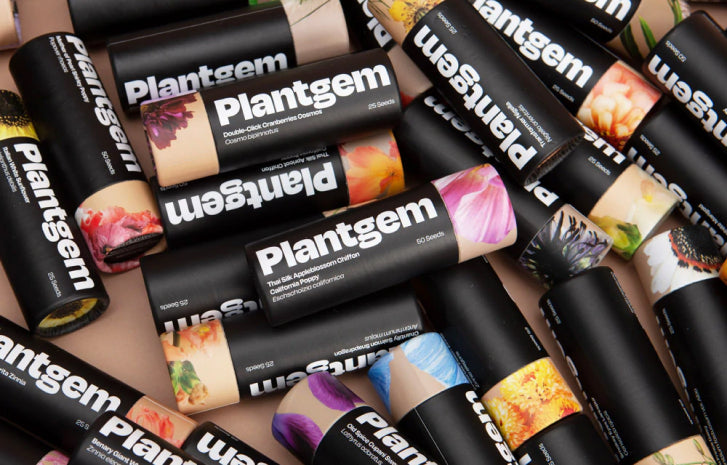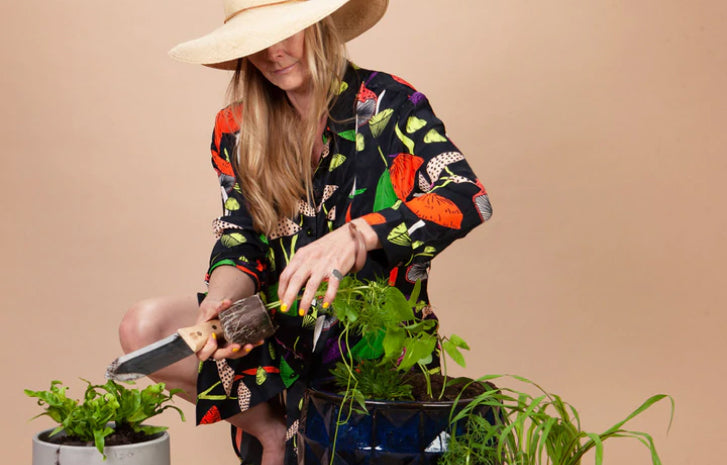
Since working with plants as dye is not an exact science (in fact, it can be as unpredictable as nature itself), we suggest you adopt an attitude of play. Some plants make a true-to-bloom color, some are surprise colors.
Experiment with plant dyes to breathe new life into beloved whites that are no longer so white, or start fresh on a piece of lovely cloth you’ve designating for something special.
Before You Begin
- Natural fibers dye best: linen, silk, and wool are ideal; cotton works too.
- Begin with freshly washed fabric.
- Gather a large, non-reactive pot, wooden spoon, and aluminum tongs for removing fabric from pot.
- To achieve long-lasting, beautiful color, you’ll need to prep your fabric with something called a mordant. This will help set the dye. Don’t worry, it’s an easy step! Simply soak your fabric overnight in soy milk, rinse it and dye the fabric while your fabric is wet.
How to Dye:
Chocolate Lace Flowers
These elegant beauties offer chic, earthy hues. Collect and dry petals from about 5 flowers. Place the dried flowers on wet fabric, roll it up, and pound into the fabric to transfer the pigment. Percussive, therapeutic, and beautiful. Unroll fabric, dry, and use!
Black Knight Scabiosa and Marigolds
These plants make a true-to-bloom-color dye by simply boiling the blooms. Trim off the stems and place about 20 blooms in a big pot of water, and boil for about 10 minutes until the water changes color. Turn the heat low to simmer and drop your cloth in. Stir with the wooden spoon occasionally until you reach your desired hue/saturation. Note that the color will look darker when it's wet. Rinse and wear.
Japanese Indigo
Japanese Indigo leaves are used fresh, so have all your materials ready before you harvest. Harvest approximately 10 stalks of Indigo. Place the leaves into your blender, cover with very cold water, and blend. Strain this mixture into your dying pot, mix in 2tbsp white vinegar, and place the cloth you want to dye into the pot. Stir occasionally for five minutes to one hour depending on how deep you want the color. While in the pot, your dye will look yellowish/green, but when you remove the cloth and expose it to oxygen it turns blue! Behold! After rinsing, you may decide you want a darker indigo. If so, simply put it back in the pot and repeat the process.
Dyers Coreopsis
These hardy, pretty beauties make a great dye. Trim off stems and place about 20 blooms in a big pot of hot water. Let it soak for 24 hours. Simmer the mixture for 1 hour, and then drop in your cloth and continue to simmer for about 45 minutes, stirring occasionally, until you reach your desired hue/saturation. Note that the color will look darker when it's wet. Rinse and wear.
Happy dyeing. We’d love to see your Plantgem color creations! Tag or dm us at @theplantgem.




